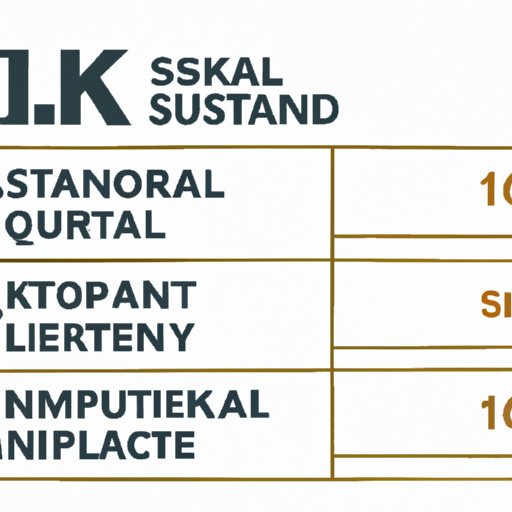Introduction
A 401k plan is an employer-sponsored retirement savings plan. It allows employees to contribute a portion of their salary to an account that is designed to help them save for retirement. These accounts offer numerous benefits, including tax advantages and potential employer contributions.
There are two main types of 401k plans: employer-sponsored plans and self-directed plans. Employer-sponsored plans are offered through an employer and allow employees to make pre-tax or Roth contributions. Self-directed plans are set up and managed by an individual and involve more complex setup and management procedures.
Qualifications for Starting a 401k Plan
In order to be eligible to start a 401k plan, you must meet certain qualifications. Generally, you must be at least 18 years old and employed in the United States. Additionally, you must have earned income from wages or self-employment during the year for which you are making contributions.
The amount that you are allowed to contribute to your 401k plan depends on your income level and age. The maximum amount that you can contribute each year is $19,500 in 2020. If you are 50 or older, you are able to make additional “catch-up” contributions of up to $6,500 per year.

Process for Opening and Setting Up a 401k Plan
Once you have determined that you are eligible to open a 401k plan, there are several steps that you need to take in order to get started. These steps include:
Choose an Employer-Sponsored Plan or Open a Self-Directed Plan
If you are employed by a company that offers an employer-sponsored retirement plan, such as a 401k, you may be able to participate in this plan. If you are not employed by a company that offers a retirement plan, or if you want more control over your investments, you may want to consider opening a self-directed plan.
Select a Financial Institution
Once you have chosen the type of plan that you would like to open, you will need to select a financial institution to manage it. You should research various institutions to find one that meets your needs and offers the services that you require.
Complete the Application Process
After you have selected a financial institution, you will need to complete the application process. This may involve filling out paperwork and providing information about yourself and your finances. Additionally, you may need to provide information about your employer, if applicable.
Fund Your Plan
Once you have completed the application process, you will need to fund your plan. You can do this by contributing money from your paycheck, transferring funds from another retirement account, or making a lump-sum contribution.
Monitor Your Plan
Finally, it is important to monitor your plan regularly. This involves reviewing your investments and ensuring that they are performing as expected. Additionally, you should review your contributions to ensure that you are staying within the contribution limits.

Tips for Choosing Appropriate Investment Options for a 401k Plan
When choosing investments for your 401k plan, it is important to understand your own risk tolerance. Some investments, such as stocks, carry more risk than others, such as bonds. It is important to choose investments that align with your goals and risk tolerance.
Additionally, you should research fees and expenses associated with various investments before making any decisions. Fees and expenses can have a significant impact on your returns, and you should always look for investments that have low fees and expenses.
Finally, it is important to diversify your portfolio. Diversification ensures that your investments are spread across multiple asset classes, which can help to reduce volatility and protect against losses.
Conclusion
Starting a 401k plan is an excellent way to save for retirement and enjoy numerous tax advantages. To get started, you must first determine if you are eligible and then select an employer-sponsored or self-directed plan. Once you have done this, you can complete the application process, fund your plan, and begin monitoring it regularly. Additionally, it is important to understand your risk tolerance and research fees and expenses when selecting investments.
By taking the time to set up a 401k plan, you can prepare for your future and enjoy the many benefits that these plans provide. So don’t wait – get started today!
(Note: Is this article not meeting your expectations? Do you have knowledge or insights to share? Unlock new opportunities and expand your reach by joining our authors team. Click Registration to join us and share your expertise with our readers.)
